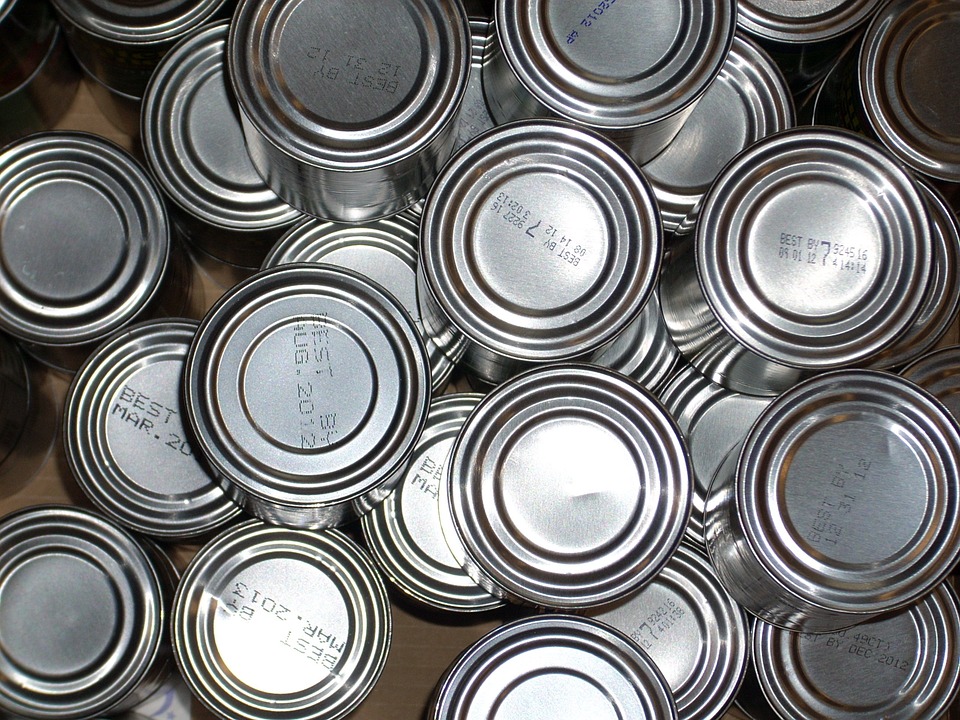In the event of a military attack, power outage, or a national disaster, you may need long-term emergency food supplies. The best approach is to store large amounts of staples along with a variety of canned and dried foods.
Bulk quantities of wheat, corn, beans and salt are inexpensive and have nearly unlimited shelf life. If necessary, you could survive for years on small daily amounts of these staples. Stock the following amounts per person, per month:
Wheat–20 pounds
Powdered Milk(for babies and infants)*– 20 pounds
Corn–20 pounds
Iodized Salt–1 pound
Soybeans–10 pounds
Vitamin C**–15 grams
* Buy in nitrogen-packed cans
** Rotate every two years
Storage and Preparation of Food Supplies
Store wheat, corn and beans in sealed cans or plastic buckets.Or make a mix of rice, corn and salt and seal it in a clean fruit juice bottle with wet’n’dry roofing cement. It’ll last a long time — and you can bury it for extra security. Buy powdered milk in nitrogen-packed cans. And leave salt and vitamin C in their original packages.
If these staples comprise your entire menu, you must eat all of them together to stay healthy. To avoid serious digestive problems, you’ll need to grind the corn and wheat into flour and cook them, as well as boil the beans, before eating. Many health food stores sell hand-cranked grain mills or can tell you where you can get one. Make sure you buy one that can grind corn. If you are caught without a mill, you can grind your grain by filling a large can with whole grain one inch deep, holding the can on the ground between your feet and pounding the grain with a pipe.
Nutrition Tips
In a crisis, it will be vital that you maintain your strength. So remember:
* Eat at least one well-balanced meal each day.
* Drink enough liquid to enable your body to function properly (two quarts a day).
* Take in enough calories to enable you to do any necessary work.
* Include vitamin, mineral and protein supplements in your stockpile to assure adequate nutrition.
Shelf Life of Foods for Storage
Here are some general guidelines for rotating common emergency foods.
Use within six months:
* Powdered milk (boxed)
* Dried fruit (in metal container)
* Dry, crisp crackers (in metal container)
* Potatoes
Use within one year:
* Canned condensed meat and vegetable soups
* Canned fruits, fruit juices and vegetables
* Ready-to-eat cereals and uncooked instant cereals (in metal containers)
* Peanut butter
* Jelly
* Hard candy, chocolate bars and canned nuts
May be stored indefinitely (in proper containers and conditions):
* Wheat
* Vegetable oils
* Corn
* Baking powder
* Soybeans
* Instant coffee, tea
* Vitamin C
* and cocoa
* Salt
* Noncarbonated soft drinks
* White rice
* Bouillon products
* Dry pasta
* Powdered milk (in nitrogen-packed cans)
Ways to Supplement Your Long-Term Stockpile
The above staples offer a limited menu, but you can supplement them with commercially packed air-dried or freeze-dried foods and supermarket goods. Rice, popcorn and varieties of beans are nutritious and long-lasting. The more supplements you include, the more expensive your stockpile will be.
Following is an easy approach to long-term food storage:
1. Buy a supply of the bulk staples listed above.
2. Build up your everyday stock of canned goods until you have a two-week to one-month surplus. Rotate it periodically to maintain a supply of common foods that will not require special preparation, water or cooking.
3. From a sporting or camping equipment store, buy commercially packaged, freeze-dried or air-dried foods. Although costly, this will be your best form of stored meat, so buy accordingly.
